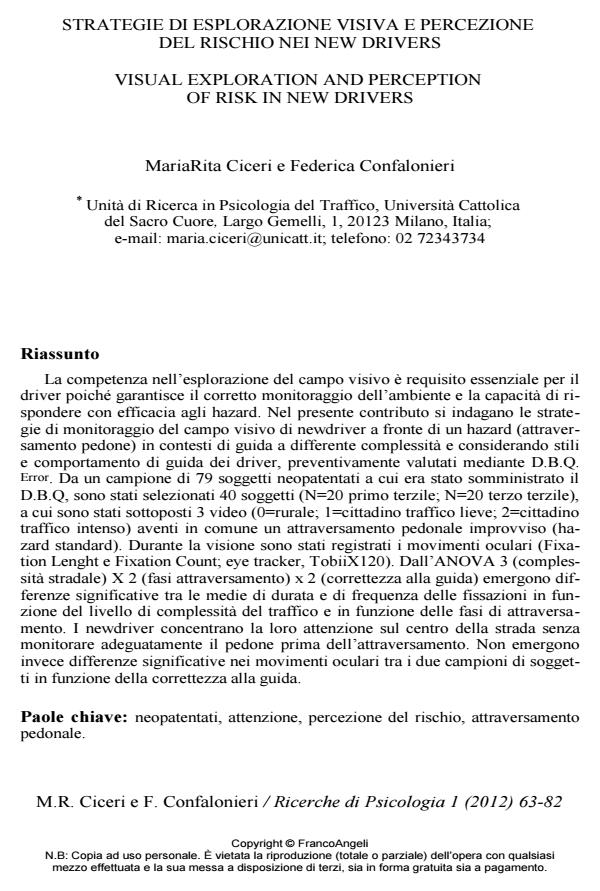Visual exploration and perception of risk in new drivers
Journal title RICERCHE DI PSICOLOGIA
Author/s Mariarita Ciceri, Federica Confalonieri
Publishing Year 2013 Issue 2012/1
Language Italian Pages 20 P. 63-82 File size 1096 KB
DOI 10.3280/RIP2012-001004
DOI is like a bar code for intellectual property: to have more infomation
click here
Below, you can see the article first page
If you want to buy this article in PDF format, you can do it, following the instructions to buy download credits

FrancoAngeli is member of Publishers International Linking Association, Inc (PILA), a not-for-profit association which run the CrossRef service enabling links to and from online scholarly content.
The ability to explore in the right way the visual field is what an expert driver needs to guarantee a correct monitoring of the environment and to guarantee the ability to answer with efficacy to routine events and hazards. In this research the main aims are to investigate how new drivers explore visual field in different guide situation with different level of complexity in corresponding to an hazard (pedestrian crossing) and how this elements could influence the rightness of guide behavior, previously tested by D.B.Q. This D.B.Q. test was administrated to 79 new drivers (19-21 years old, male and female), than, the twenty subjects with highest and the twenty with lowest scores were selected and submitted to the experimental condition: the eyes movements (fixation length and fixation count) of the subjects were registered by an eye tracker (TOBII X120) during the vision of three video of a driving experience with growing difficulties (0 = rural background, 1 = urban background with few car, 2 = urban background with a lot of cars) and a pedestrian crossing. By ANOVA analysis 3 (traffic complexity) X 2 (beginning and ending of pedestrian crossing) X 2 (guide accuracy) significant differences emerge between fixation length and fixation count in relation to the traffic complexity and in relation to the beginning and the ending of pedestrian crossing; by the analysis don’t came out significant differences in the eyes movements in relation to guide accuracy.
Keywords: New drivers, attention, hazard perception, pedestrian crossing
Mariarita Ciceri, Federica Confalonieri, Strategie di esplorazione visiva e percezione del rischio nei new drivers in "RICERCHE DI PSICOLOGIA " 1/2012, pp 63-82, DOI: 10.3280/RIP2012-001004